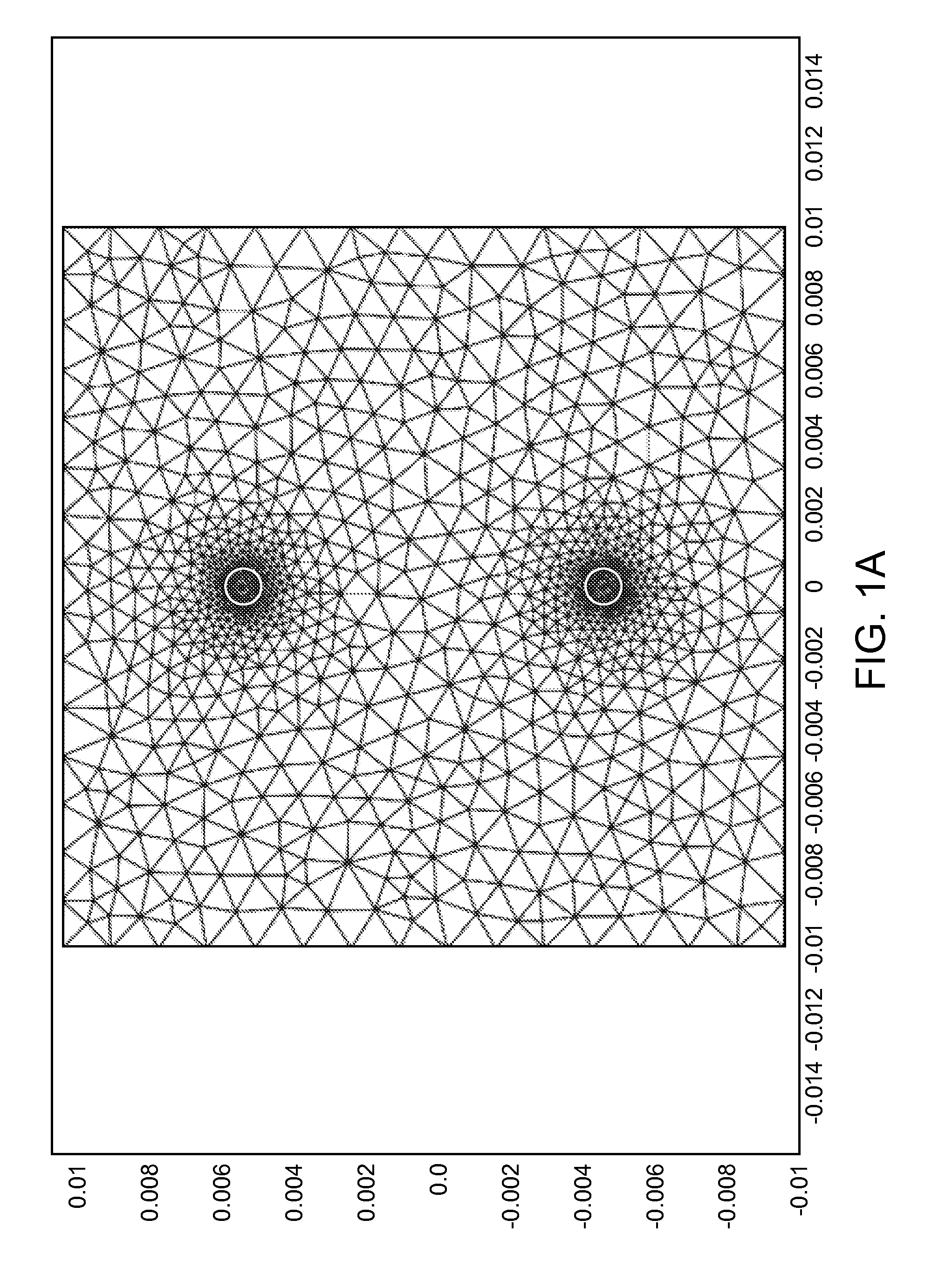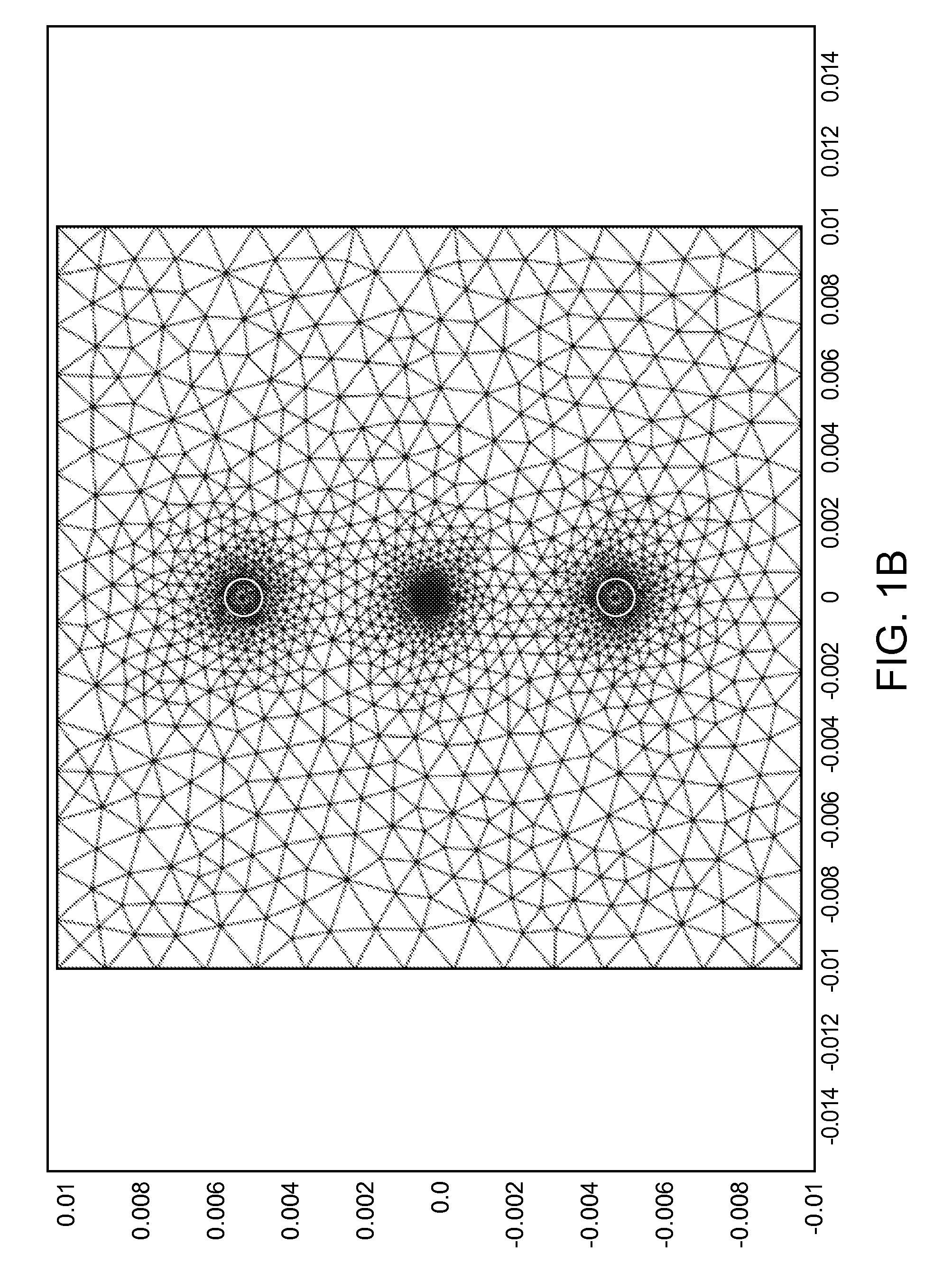Controlled irreversible electroporation
a technology of irreversible electroporation and controlled electroporation, which is applied in the field of irreversible electroporation, can solve the problems of large probes and difficult use, inability to control the affected area, and difficulty in controlling the extent of the treated area
- Summary
- Abstract
- Description
- Claims
- Application Information
AI Technical Summary
Benefits of technology
Problems solved by technology
Method used
Image
Examples
specific embodiments
[0042]Models described in the Examples below were created and tested to demonstrate the importance of investigating heterogeneous models with NTIRE and to show that NTIRE treatment methods need to consider the heterogeneous nature of the tissue. Both the model of the prostate and the breast demonstrated the substantial difference between homogeneous and heterogeneous cases. Furthermore, unanticipated information about the effects of electroporation was also discovered. The impact electroporation has on biological structures such as nerves, ducts and blood vessels was previously unknown. This investigation has made clear that nerves can be preserved in treated tissue because of the insulating effect of surrounding myelin layers. Additionally, the Examples show that mammary ducts will also be retained because of myoepithelial cells and their ability to regenerate. Therefore, heterogeneous models are not only important to consider in order to generate an accurate simulation, but also t...
example 1
[0047]Models were generated using numerical analysis executed by a commercially available program Comsol Multiphysics (version 3.4). This initial study utilized 2-dimensional models because these were sufficient to demonstrate the significant difference between homogeneous and heterogeneous models. Two equations were solved simultaneously in Comsol. The first of which was the Laplace equation for potential distribution associated with an electric pulse.
−∇·d(σ∇V−J6)=aQj (1)
[0048]Where σ is electrical conductivity, V is voltage, J6 is external current density, d is thickness and Qi is the current source.
[0049]For all boundaries the external current density and the current source were set to zero, and thickness was set to one. The electric field was solved in order to illustrate the electrical effects of the electroporation in the particular tissue as listed in Tables 1 and 2. The electric field was solved for in the AC / DC Conductive Media module using a static analysis. Each structur...
example 2
[0074]The methodology described above in Example 1 was used to analyze the prostate with a blood vessel which had a relatively small radius (e.g. less than 5 mm) which was placed in the center of a square section of prostate tissue. FIGS. 6A, 6B, 7A, 7B, 7C and 7D show the temperature distributions in the same manner as FIGS. 2A, 2B, 3A, 3B, 3C and 3D. The maximum temperature reached was 313.584K, while it was 313.431K for the homogeneous case. The blood vessel model has a temperature distribution between 310.238 and 313.584K. Because the maximum temperature reached is below 360.15K, the entire samples stays well below any temperature necessary for thermal damage. This means that absolutely none of the tissue receives any thermal damage. However, it is important to note that an elevated temperature does exist, but only in the immediate vicinity of the electrodes (FIG. 7A).
[0075]The electrical fields in this case are depicted in FIGS. 7 and 8 in the same manner as FIGS. 4 and 5.
[0076...
PUM
 Login to View More
Login to View More Abstract
Description
Claims
Application Information
 Login to View More
Login to View More - R&D
- Intellectual Property
- Life Sciences
- Materials
- Tech Scout
- Unparalleled Data Quality
- Higher Quality Content
- 60% Fewer Hallucinations
Browse by: Latest US Patents, China's latest patents, Technical Efficacy Thesaurus, Application Domain, Technology Topic, Popular Technical Reports.
© 2025 PatSnap. All rights reserved.Legal|Privacy policy|Modern Slavery Act Transparency Statement|Sitemap|About US| Contact US: help@patsnap.com



